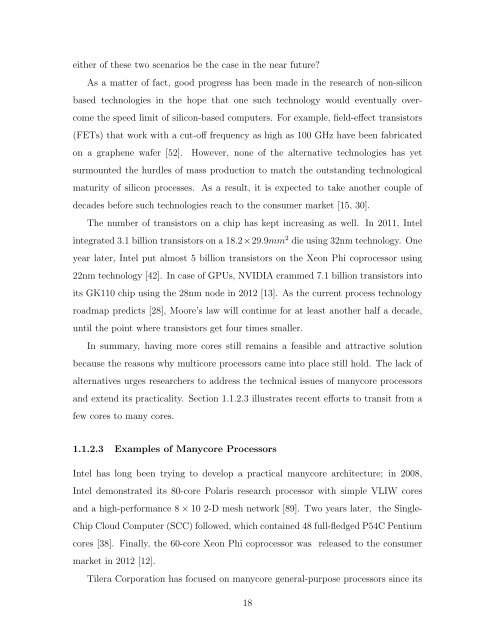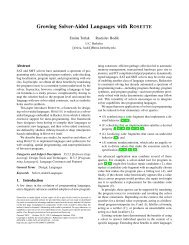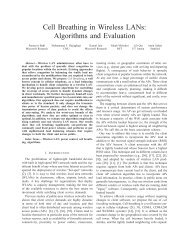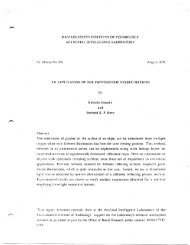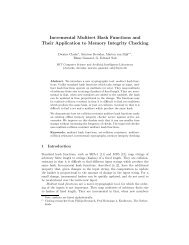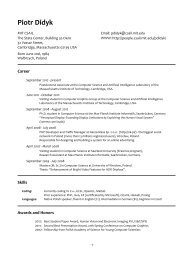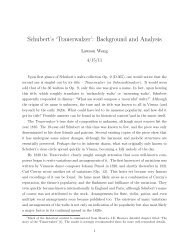On-chip Networks for Manycore Architecture Myong ... - People - MIT
On-chip Networks for Manycore Architecture Myong ... - People - MIT
On-chip Networks for Manycore Architecture Myong ... - People - MIT
You also want an ePaper? Increase the reach of your titles
YUMPU automatically turns print PDFs into web optimized ePapers that Google loves.
either of these two scenarios be the case in the near future?<br />
As a matter of fact, good progress has been made in the research of non-silicon<br />
based technologies in the hope that one such technology would eventually overcome<br />
the speed limit of silicon-based computers. For example, field-e↵ect transistors<br />
(FETs) that work with a cut-o↵ frequency as high as 100 GHz have been fabricated<br />
on a graphene wafer [52]. However, none of the alternative technologies has yet<br />
surmounted the hurdles of mass production to match the outstanding technological<br />
maturity of silicon processes. As a result, it is expected to take another couple of<br />
decades be<strong>for</strong>e such technologies reach to the consumer market [15, 30].<br />
The number of transistors on a <strong>chip</strong> has kept increasing as well. In 2011, Intel<br />
integrated 3.1 billion transistors on a 18.2⇥29.9mm 2 die using 32nm technology. <strong>On</strong>e<br />
year later, Intel put almost 5 billion transistors on the Xeon Phi coprocessor using<br />
22nm technology [42]. In case of GPUs, NVIDIA crammed 7.1 billion transistors into<br />
its GK110 <strong>chip</strong> using the 28nm node in 2012 [13]. As the current process technology<br />
roadmap predicts [28], Moore’s law will continue <strong>for</strong> at least another half a decade,<br />
until the point where transistors get four times smaller.<br />
In summary, having more cores still remains a feasible and attractive solution<br />
because the reasons why multicore processors came into place still hold. The lack of<br />
alternatives urges researchers to address the technical issues of manycore processors<br />
and extend its practicality. Section 1.1.2.3 illustrates recent e↵orts to transit from a<br />
few cores to many cores.<br />
1.1.2.3 Examples of <strong>Manycore</strong> Processors<br />
Intel has long been trying to develop a practical manycore architecture; in 2008,<br />
Intel demonstrated its 80-core Polaris research processor with simple VLIW cores<br />
and a high-per<strong>for</strong>mance 8 ⇥ 10 2-D mesh network [89]. Two years later, the Single-<br />
Chip Cloud Computer (SCC) followed, which contained 48 full-fledged P54C Pentium<br />
cores [38]. Finally, the 60-core Xeon Phi coprocessor was released to the consumer<br />
market in 2012 [12].<br />
Tilera Corporation has focused on manycore general-purpose processors since its<br />
18


